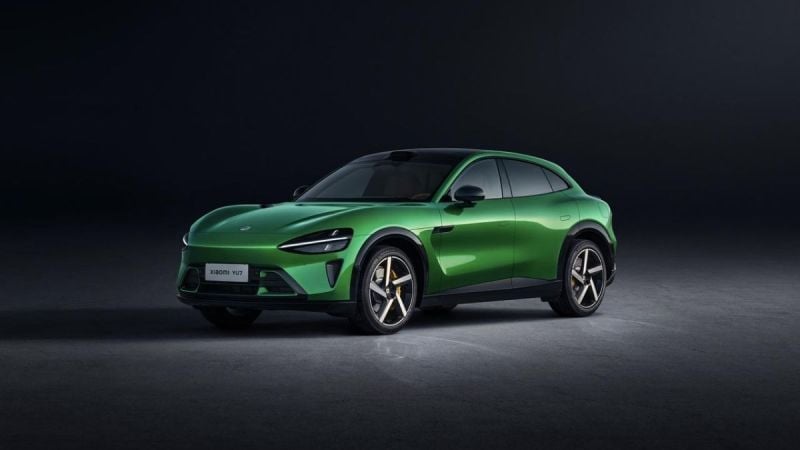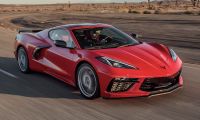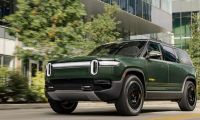The automotive world is abuzz with the arrival of a new challenger, a sleek and powerful SUV poised to take on the reigning champion. But to call the Xiaomi YU7 a mere "Tesla Model Y killer" would be a gross oversimplification. This is not just another electric vehicle; it's a rolling testament to the power of a deeply integrated technology ecosystem, and it boasts what may be the most functional in-car AI interface to date, all powered by NVIDIA's formidable Thor superchip.
A New Benchmark in Electric Performance
For years, Tesla has been the undisputed king of the electric vehicle space, its Tesla Model Y the go-to choice for families and tech enthusiasts alike. But the landscape is shifting, and the tremors are emanating from China. Xiaomi, the consumer electronics giant renowned for its smartphones, smart home devices, and more, has entered the automotive arena with a ferocity that has caught the industry by surprise. Their first offering, the YU7 sedan, was a shot across the bow. The Xiaomi YU7, is a direct broadside.
On paper, the YU7 meets and, in many aspects, surpasses the Model Y. It's larger, offering a more commanding presence and a more spacious interior. It boasts superior range, with certain configurations promising a staggering 835 kilometers on a single charge under the CLTC standard, and a 0-60 time of around 3.2 seconds leaving the Model Y (3.5 second 0-60 in the performance version) in its rearview mirror. The 800-volt architecture ensures lightning-fast charging, a crucial factor for a seamless EV experience. And in a move that’s sure to grab headlines, the YU7 is priced aggressively, undercutting its American rival.
The NVIDIA-Powered AI Advantage
But to focus solely on these metrics is to miss the forest for the trees. The true game-changer lies within the cabin, in the very way the driver and passengers interact with the vehicle. Here, the YU7 isn't just catching up to Tesla; it's leapfrogging it.
At the heart of this revolution is the NVIDIA DRIVE Thor platform, a single, centralized superchip that handles everything from the vehicle's advanced driver-assistance systems (ADAS) to its infotainment and in-car AI. This is a paradigm shift from the distributed computing architecture found in most vehicles, where a multitude of electronic control units (ECUs) handle different tasks. The result is a system that is not only more powerful and efficient but also more cohesive and responsive.
Xiaomi has leveraged this power to create a user interface that is both intuitive and deeply intelligent. The expansive, high-resolution touchscreen is the nerve center, but it's the underlying AI that truly shines. Voice commands are understood with a natural language proficiency that feels conversational, not stilted. The system learns your preferences, anticipates your needs, and seamlessly integrates with your digital life. Imagine your car's navigation system not just showing you the route but also suggesting a coffee stop based on your usual morning routine and the real-time traffic ahead. This is the promise of a truly functional AI, and the YU7 delivers.
Unprecedented Demand and the Power of Ecosystem
The announcement of the YU7 was met with an unprecedented wave of enthusiasm. Within minutes of the launch, reservations flooded in, selling out the entire production capacity until early 2027. This fervent demand speaks volumes about the public's appetite for a compelling alternative in the EV market. While this means new buyers will face a significant wait, it also underscores the immense confidence consumers have in Xiaomi's vision. The company has a proven track record of delivering high-quality, feature-rich products at competitive prices, and their foray into the automotive world appears to be no different. The initial delivery windows for early reservation holders are remarkably short, a testament to Xiaomi's manufacturing prowess honed over years of producing complex electronics at a massive scale.
This is where Xiaomi's broader strategy comes into play, a holistic vision they call "Human x Car x Home." The YU7 is not an isolated product; it's a key node in a vast network of interconnected devices. The recent announcement of their smart glasses provides a tantalizing glimpse into this future. Imagine receiving navigation prompts discreetly displayed in your field of view, or your glasses identifying a landmark as you drive by and offering to play a relevant podcast through the car's speakers. This seamless integration between your personal devices and your vehicle is not a distant dream; it's the logical next step in Xiaomi's ecosystem.
Your Xiaomi smartphone will, of course, be the central key, not just for unlocking and starting the car, but for a level of personalization that is currently unheard of. Your preferred cabin temperature, seat position, and even your favorite playlists could be automatically set the moment you approach the vehicle. The potential for a truly unified and effortless user experience is immense.
Wrapping Up
The Tesla Model Y remains a formidable vehicle, a pioneer that has rightfully earned its place in automotive history. But the Xiaomi YU7 represents the future. It's a vehicle that understands that the modern car is not just a mode of transportation, but a connected living space. By combining cutting-edge hardware, a truly intelligent AI interface, and a deep understanding of the consumer electronics landscape, Xiaomi has not just built a competitor; it has redefined what an electric SUV can be. The Xiaomi Dragon has indeed breathed fire, and the automotive world will never be the same.
Disclosure: Image provided by Xiaomi
Rob Enderle is a technology analyst at Torque News who covers automotive technology and battery developments. You can learn more about Rob on Wikipedia and follow his articles on Forbes, X, and LinkedIn.











